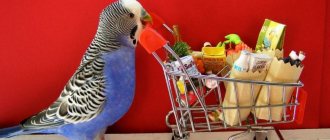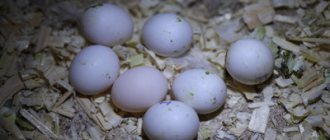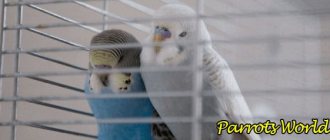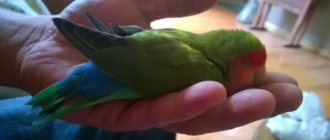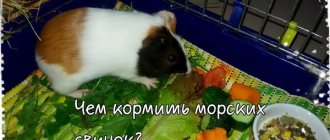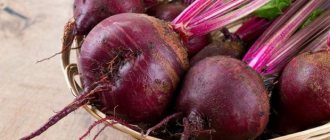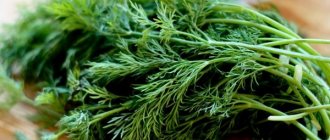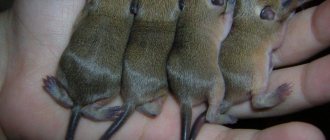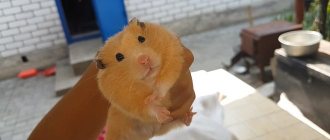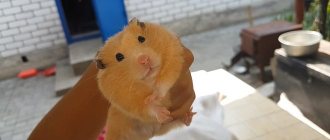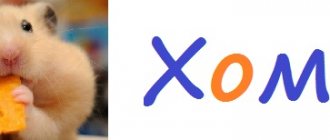- home
- Parrot
- Feeding
11/04/2019 The basis of the diet of this species of feathered friends in the wild is grains. The budgie also eats fruits, young leaves, greens and insects. A proper diet will not only give your pet bright coloring and love of life, but also longevity. A parrot can live without food for only four days, but with loving treatment, your winged pet will delight you for up to ten years.
Grain mixtures
Pet stores sell ready-made food mixtures for birds of different types and sizes. When choosing grain food for budgies, not only the composition, but also the size of the fraction is taken into account. Pieces intended for a large bird simply cannot be swallowed by a small one. Fortunately, a variety of foods are available. Manufacturers write on the packaging which types each is suitable for. Some bird owners prepare the mixture themselves at home. For this, only proven, fresh cereals are used.
The next step is to pay attention to the composition of the feed. For budgies, food should consist of:
- From several types of millet, making up 70% of the diet. White, black, red and yellow grains must be present.
- Oats, the share of which is not less than 10%.
- Other grain crops: wheat, flaxseed, sunflower and others. The remaining 20% comes from them.
It is recommended to give millet only boiled and in small quantities. This cereal has a bad effect on poultry digestion.
Basic diet of budgerigars
It is known that the basis of a feathered pet’s diet is grain. However, it is important to diversify it with vegetables, fruits, and herbs. Do not forget that the “wavy”, like any other living creature, needs vitamins and minerals for normal life.
Grain feed
When purchasing a parrot, you should ask the breeder what kind of grain feed its parents ate. If the purchase was made at a pet store, it is enough to consult with a specialist to purchase a really good and nutritious product. It is important to consider that its main components may be:
- oat grains;
- millet grains;
- sunflower, flax, sesame seeds;
- seeds of meadow crops.
When choosing a feed mixture, you should pay attention to its expiration date. If it has expired, the food will be of poor quality and may negatively affect the health of the bird.
Sprouted feed
It is a known fact that sprouted grains saturate the bird’s body with energy. They are enriched with vitamins, minerals, and fiber. It is important to enrich your bird’s diet with such food in winter. It is best to germinate grains of crops such as:
- buckwheat;
- wheat;
- oats
The shelf life of sprouted feed is only two days. Storage location: refrigerator. For this reason, you should not prepare large quantities of grains. For germination, you will need a shallow dish in which they will be placed, wrapped in gauze. In order for the grains to germinate, they must be constantly moistened.
Is it possible to feed your pet cereal?
Wondering what can be fed to a budgie other than food, many wonder whether it is worth boiling porridge for the bird. There is no ban on their use in your pet’s diet, however, it is important to approach preparation wisely. Experts recommend mixing several cultures, boiling them until half cooked or fully cooked, and then serving the “wavy”. You need to prepare porridge from the following cereals:
- buckwheat;
- millet;
- wheat (crushed);
- pea;
- rice
The remains of porridge not eaten by birds can be frozen. It is important not to use the microwave during defrosting. Experts say that porridge can be enriched with chopped herbs, fruits, and vegetables.
Greens and branches in the diet of birds
The bird needs greens and twigs so that it can wear down its beak when eating them. Herbs and branches must be collected in ecologically clean areas, and the former are torn in small bunches and carefully examined for the presence of stems of poisonous plants in them. The following types are most often preferred:
- clover, burdock, plantain, nettle;
- oats, barley, wheat;
- spinach, lettuce, carrot and beet tops.
It is important to remember that before serving to the bird, the grass is carefully sorted, washed, and inspected for the presence of insects on it. Twigs should also be collected in areas that are ecologically clean. It is best to give preference to branches from trees such as:
- birch;
- Linden;
- aspen;
- maple;
- chestnut;
- alder;
- ash;
- beech.
It is important that there are no resin residues on the branches. Before serving them “to the table” of your feathered pet, you need to soak them in water for several hours and then scald them with boiling water. It is better not to give willow or willow branches, as in spring they are filled with toxic substances that are poisonous to your pet.
Is it acceptable for “wavy” animals to eat fruits and berries?
What else can you give budgies besides food? Fruits and berries are permitted products used to enrich the diet of “wavy animals”. It is best to give preference to the following crops:
- apricots;
- plums;
- peaches;
- melons;
- apples;
- pears;
- garden and forest berries;
- melons;
- watermelons;
- grapes;
- cherries;
- cherries;
- citrus;
- kiwi.
At one time, the bird is given a small amount of fruits and berries. They must be washed clean and peeled. “Volnistika” can be given both dried and fresh products.
How to give vegetables correctly?
It is known that vegetable crops are products enriched with vitamins and minerals. For this reason, it is important to include them in the diet, albeit in small quantities. It is worth giving preference to such crops as:
- zucchini;
- cucumbers;
- tomatoes;
- corn;
- bell pepper;
- carrot;
- turnip;
- beet;
- cabbage;
- young green peas;
- young beans.
The main recommendations for serving vegetables for birds are:
- using only ripe tomatoes;
- the use of milk corn, which is not hard and not quite ripe;
- carrots, turnips, beets and cabbage stalks are grated on a coarse grater before serving;
- Peeling vegetables from seeds is not necessary.
Does a parrot need vitamin supplements and mineral mixtures?
Having learned what else budgies eat besides food, their owners usually wonder whether it is necessary to use vitamin supplements and mineral mixtures. It is worth noting that this category of birds has a rather weak muscular part of the stomach, which means that in order to improve the process of digesting food, they need to consume gastroliths, that is, sand and small stones.
Picking up such food in a sandbox means poisoning your pet. It is best to give preference to mixtures sold at a veterinary pharmacy or specialty store. Among the mineral substances necessary for the bird for the normal functioning of the central nervous system and the entire organism as a whole, the following are noted:
- sulfur;
- phosphorus;
- calcium;
- magnesium;
- iron.
Most of these substances are contained in chalk, sepia, crushed eggshells, bone meal, and charcoal. You can buy them at a pet store. There, sellers will help you choose vitamin mixtures for your pet. It is important to remember that vitamins are not recommended for “wavy cats” before the first molt.
Fruits, vegetables, berries and nuts
Although the basis of the food of the wavy is grains, be sure to add fresh fruits, vegetables and berries to them. Budgerigars eat them with pleasure. They are full of valuable vitamins that can only be obtained in other ways from vitamin supplements. In no case should you give rotten, fermented fruit, as well as those with signs of mold. Only fresh fruits will benefit your pet. They should be washed thoroughly in running water without using chemicals and given in small portions throughout the day, preventing them from spoiling. A budgie can eat:
- Raw carrots. Serve in pieces or mashed. It contains a lot of carotene.
- Tomatoes, which are also rich in carotene. All tomatoes must be ripe, without green barrels containing hazardous substances.
- Cucumbers. It is better not to give them often, this will lead to weight loss in the bird.
- Melon or pumpkin. Their winged friends are especially loved.
- Beets, which are extremely useful as they contain a lot of fiber and vitamins.
- Berries: currants, sea buckthorn, lingonberries, blueberries, cranberries, raspberries, rowan and many others. All of them can be given to your pet, but do not overdo it. Excess is fraught with hypervitaminosis.
- Apples. They can be given every day. When cleared of skin and pits, they will not harm the parrot.
- Parrots will eat oranges and tangerines with pleasure.
- Pears are allowed to be offered to birds, but not often.
- Bananas and kiwis, always peeled.
- You can feed budgies nuts, but they should only be offered unsalted and no more often than once every two months. This is too fatty food for birds that spend most of their lives in a cage.
Water for the parrot
In addition to food, don’t forget about drinking water! You cannot pour cold water straight from the tap, it contains chlorine, and cold water can make the bird sick. Fill a container with tap water and leave it to steep for 24 hours at room temperature. Change the water in the cage at least once a day.
You can add lemon juice to the water at the rate of 1-2 drops per tablespoon. There are vitamin drops for drinking water. But remember to follow the instructions on the package.
The daily food requirement for each parrot is different, it depends on the weight and size of the bird. For large individuals, up to 50 grams of food is calculated, for small ones up to 20 grams. It is not recommended to change the composition of the feed more than once a month.
Greenery
The diet of the winged friend also includes green food. The budgie eats lettuce leaves, some trees and even ordinary grass. This food contains a lot of fiber and substances that are beneficial for the immune system.
Healthy greens include: all types of cabbage, carrot and beet tops, dandelions, clover, spinach, radish tops, chicory leaves, plantain. The leaves should be washed well in water, as bird parasites can settle on them. The greens should be fresh; it is better not to offer them to the parrot if they are withered or stale.
Under no circumstances should you give: tops of tomatoes, eggplants, potatoes. Also prohibited are laurel, spurge, dill, and basil. Store-bought flowers are impregnated with a special composition, thanks to which they last longer. Such flowers should not be given to a parrot.
Is it possible to give a parrot bread?
White (wheat) bread can be given to parrots. ... Millet, oats, and seeds will be useful for the parrot. Once a week you can treat him with such a delicacy as grated carrots, beets, eggs, cheese (but only homemade). The parrot must have fresh water in its cage.
Interesting materials:
In what year did the Roman Empire fall? In what year was the Lugansk region renamed? In what year was Mariupol renamed? In what year was the Hermitage repainted? In what year was the capital of Kazakhstan moved? In what year did you switch to a five-day week? In what year did the Soviet Union cease to exist? In what year did they stop accepting Pioneers? In what year did you transfer to 1 year of service? What year is the song "Smoke of Menthol Cigarettes"?
Twigs
Some owners of feathered pets recommend adding thin tree branches to the diet. They are not entirely correctly classified as food, since the parrot mainly sharpens its beak on them and cleans its claws on its paws. But, since at the same time he swallows particles of bark and wood, you should make sure that such food is useful to him.
You can give budgies thin branches of maple, aspen, linden, and various fruit trees, such as apple or plum trees. You can give twigs of nut trees, but they need to be removed from leaves, which contain tannins.
You should not offer oak, pear, acacia, lilac, or bird cherry to your winged friend. The substances in these branches are dangerous for your pet. You need to be careful with conifers: they can be given a little at a time if they are cleared of resin.
Vegetable menu for parrots
Before offering vegetables to your budgie, they must be washed very thoroughly. If there is a suspicion that the nitrate content is too high, vegetables can be soaked in water for two hours - the nitrates dissolve and are mostly eliminated. Birds prefer vegetables to be grated or finely chopped.
The following crops are extremely contraindicated for budgies: eggplant; radish, daikon, radish; celery; garlic, onion.
All other vegetables for birds are considered healthy, but some nuances must be taken into account:
Beans, green peas, and corn can be offered to pets only in season and only in a slightly unripe form. If the beans are fully ripe, they accumulate substances that are difficult for birds to digest, which can only be removed through prolonged cooking. Green salad and spinach are fed in very moderate portions to avoid digestive upset. The tomato must be completely ripe. The green areas of the fruit must be cut out, since the alkaloid solanine it contains is harmful to birds. Under no circumstances should you offer your pet tomato leaves.
Chinese cabbage accumulates nitrates in its hard petioles, so it is advisable to feed birds only the green part of the leaf. White cabbage. There is still no clear answer to the question whether cabbage can be given to budgies. Some birds readily eat it without any side effects, and some experience indigestion. In any case, it is recommended to first rinse the cabbage leaf with boiling water. Carrots are considered the most valuable food. It is offered in grated form mixed with other ingredients, for example, a boiled egg. Cucumber is capable of accumulating nitrates, so it is better not to feed purchased products to the parrot.
The following types of vegetable crops will also be very useful for budgies: pumpkin, melon, watermelon, turnip, squash, zucchini, beets, bell pepper.
Porridge
In addition to food, for variety, you can add porridge to the diet. They can be either brewed in boiling water or boiled. Each parrot has its own preferences for the type of porridge and its viscosity. Having studied the tastes of your pet, you can always please him. You need to cook porridge in water without milk, salt, sugar or any additives. To make the treat sweet, you should stir a teaspoon of honey into about a large spoon of porridge.
It is recommended to give:
- buckwheat;
- rice, wild and brown;
- oatmeal, but only slow cooking;
- millet;
- peas;
- lentils;
- barley;
How to cook it correctly - recipe
Before cooking the cereal, rinse thoroughly with running water. Professional ornithologist breeders recommend steaming grains in a thermos or a simple thermal mug . That is, add cereal, pour boiling water over it, close the lid tightly and put in a warm place for a couple of hours.
Afterwards the water is drained and the porridge is allowed to cool slightly. To quickly reduce the temperature, the composition can be washed with water. To preserve maximum nutrients, the cereal is soaked in cold water for 12-14 hours. The liquid must be filtered. It is better not to use ordinary running water.
You cannot add salt, sugar, oils and seasonings when preparing porridge . All this can cause serious harm to the animal’s gastrointestinal tract.
As for portions, the norm for budgies is about 1-1.5 teaspoons. The product must be heated, but not hot, otherwise the bird will burn its crop. A cold mixture is harder to digest.
Sprouted food
Another way to diversify your feathered friend’s diet is to use sprouted grains. They are so nutritious that they even replace feed mixture. The diet of budgies at home can be based on sprouted grains. The only negative is that you will have to germinate the seeds every day, since they are not stored for a long time. However, everyone can handle its preparation:
- To properly germinate grains, fresh ones are selected first. Old or damaged seeds simply will not germinate.
- Rinse the selected seeds with running water.
- Pour warm water into a bowl and leave until morning.
- The next day, rinse the grains again and pour them into an even layer on a saucer.
- Cover with a damp cloth napkin or something similar. Fold the napkin four times.
- Moisten the cloth once every four hours.
- Sprouts will appear after a day. Then the treat should be offered to the bird. There is no need to hesitate: this food for parrots will spoil within two days.
Drink
A budgerigar should always have clean water in its drinking bowl. It must be changed periodically, otherwise it will become dirty and simply unsuitable for drinking. But you need to know what kind of water to give your budgie.
It is not recommended to give boiled, raw water, or mineral water with gases to feathered pets. It must be filtered and purified. It should contain useful additives - potassium, magnesium, sodium. Additionally, you can add freshly squeezed juices, lemon juice, a decoction of chamomile, and rose hips to the water.
Mineral supplements
To keep your pet healthy and alert, he is also offered mineral-containing supplements:
- A special chalk sold in pet stores. Construction material cannot be used.
- Ground eggshells.
- Organic sand. It can also be purchased at pet stores. It plays a role in grinding food in the bird's crop.
- Sepia. This is the inside of a cuttlefish's shell. She is also very helpful.
- During the molting period, the parrot can be given a pinch of sulfur for two teaspoons of food, no more than fits on the tip of a knife.
- When giving your parrot fortified water, you should limit it from juicy fruits and vegetables. Otherwise he will quench his thirst with them.
Vitamin complexes and mineral mixtures for budgies
Due to anatomical features, such as the presence of a goiter, birds need gastroliths, i.e. sand and small pebbles. Also, the diet should contain certain minerals, such as sulfur, phosphorus, calcium, magnesium, iron. In pet stores you can buy special mineral stones, as well as chalk and sepia. It is not recommended to give vitamin complexes to children on purpose, since there is a very high risk of incorrectly calculating the dose. However, with the first renewal of plumage, it is necessary to maintain the balance of nutrients in the parrot’s body. To do this, you can give him vitamin solutions that will help shorten the molting period and quickly restore feather cover. There are also special preparations for normalizing metabolism and treating stress, and compositions to support the vital functions of birds during the period of bearing and raising chicks. You should not neglect them, because these are the drugs that help pets get through difficult periods without serious health consequences. For example, you can give your pet the combined multivitamin complex Radostin® Vitasil. It contains vitamin A, D3 and E. The components have a synergistic effect, which is expressed in increasing the body's resistance, normalizing metabolism, stimulating development, growth and productivity, especially during egg laying and feeding chicks. Attention! It is very important to strictly adhere to the dose and change the water with dissolved vitamins every day!
How and how many times a day to feed
A budgie needs 12 grams of main food and another 4 grams of treats. If in doubt, measure portions with teaspoons. Two teaspoons just mean a serving. The portion does not change, even if sprouted grains are used instead of food from the store.
You can feed your parrot once a day with a grain mixture, but it is better to give fruits and vegetables in small pieces throughout the day so that they do not spoil. Water for the bird must be fresh, and it must also be changed daily.
How to feed a sick budgie
Unfortunately, birds are not immune from diseases, and during the period of treatment and recovery, feathered pets require special care and, of course, special nutrition. As a rule, at this time the birds are too weak to peck at the usual grain food, so you need to take care of the menu for your pet separately. During illness, veterinarians most often suggest switching the parrot to liquid porridge, which you can prepare yourself in a blender. The finished mixture must be given to the bird from a syringe at least 3 times a day, and the portion should not be more than 1.5 ml. If the bird can eat on its own, it is better to offer it a mixture of millet, buckwheat and crushed wheat groats, boiled until half cooked. For diarrhea, rice porridge is recommended. A varied diet, only fresh foods and mineral supplements - all this will allow your parrot to remain cheerful and healthy throughout his life. It is also worth regularly consulting with a veterinarian about your pet’s diet in order to develop the most healthy and tasty menu for him.
What not to feed budgies
Under no circumstances should you add the following to your budgie's diet:
- Salt
- No spices
- Bread, because it uses milk, salt, and sugar.
- Milk and dairy products. You can give low-fat cottage cheese in small quantities.
- Mushrooms.
- Chocolate, coffee, cocoa and containing them.
- Some types of vegetables and herbs. You should not feed budgies potatoes, eggplants and radishes. It is also not recommended to feed legumes raw.
Grain feed
As the main “dish”, parrots can be offered ready-made food containing the necessary vitamin and mineral complexes. As a rule, they include a mixture of various grain crops, the bulk of which is millet and oats; and sunflower seeds, flax seeds, hemp seeds, and canary seeds can be used as additives. The finished food may also contain various seeds of wild herbs, and even pieces of dried fruit.
You can give budgies unroasted pumpkin and sunflower seeds, but in limited quantities, since sunflower seeds have a high content of vegetable fats.
No matter how nutritious grain food is, it is still not able to provide the pet’s body with everything it needs. For health, a full life, and just for pleasure, food for budgies should be more varied.
Can parrots eat porridge?
Regular consumption of cereal dishes by poultry has a good effect on their health. The main benefit is the intake of vitamin B complex into the body. Its deficiency can cause serious diseases. In addition to vitamins, porridges are rich in amino acids and proteins. They improve the functioning of the digestive and other systems of the body. Newborn parrots are fed liquid formulas. They are prepared from semolina or wheat cereal. Crushed eggshells are added to them. Small chicks are fed from a syringe.
